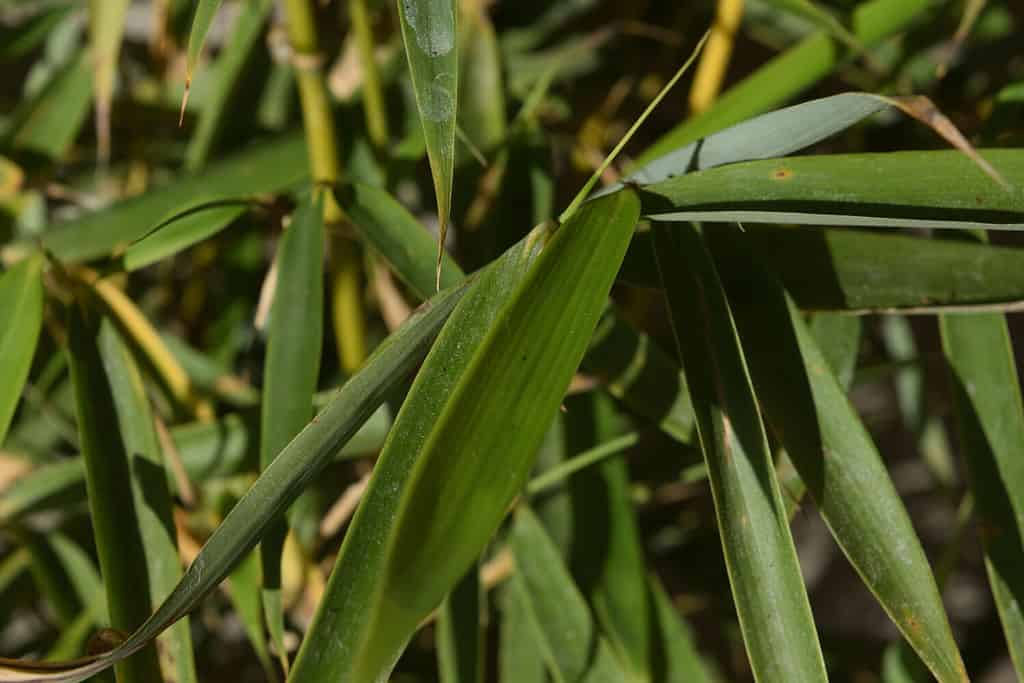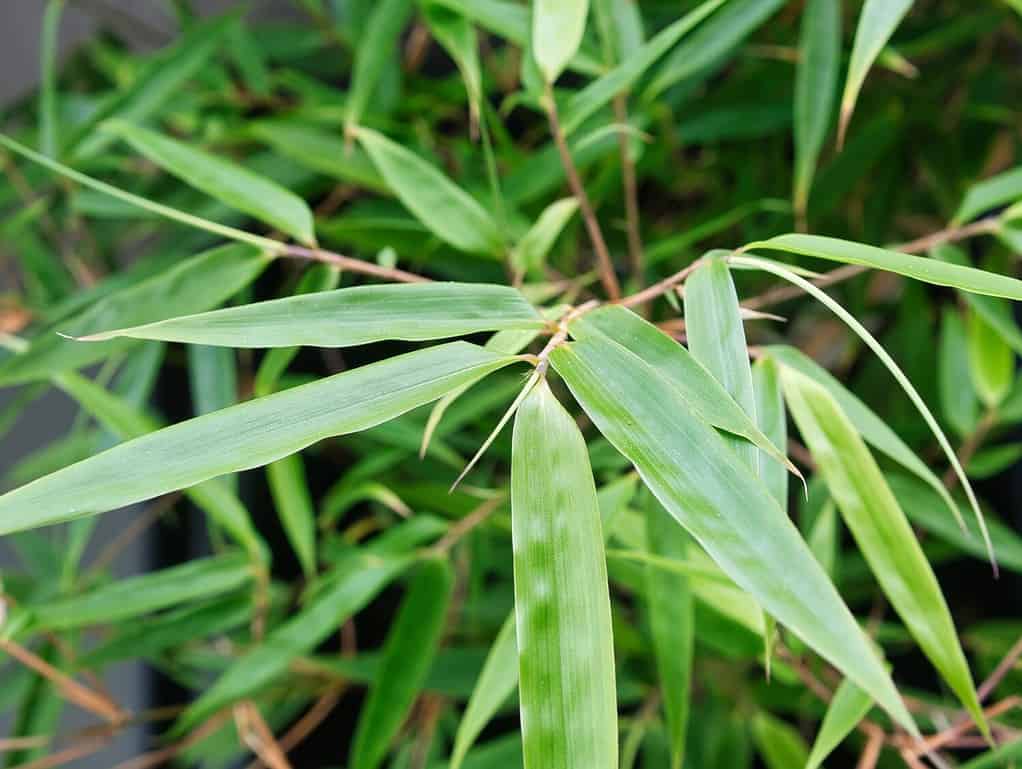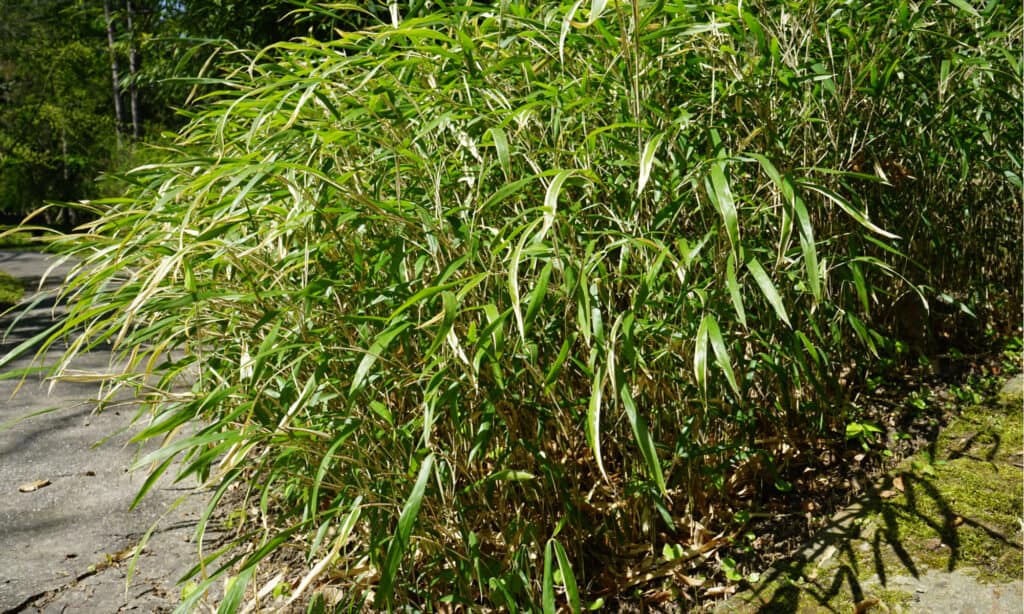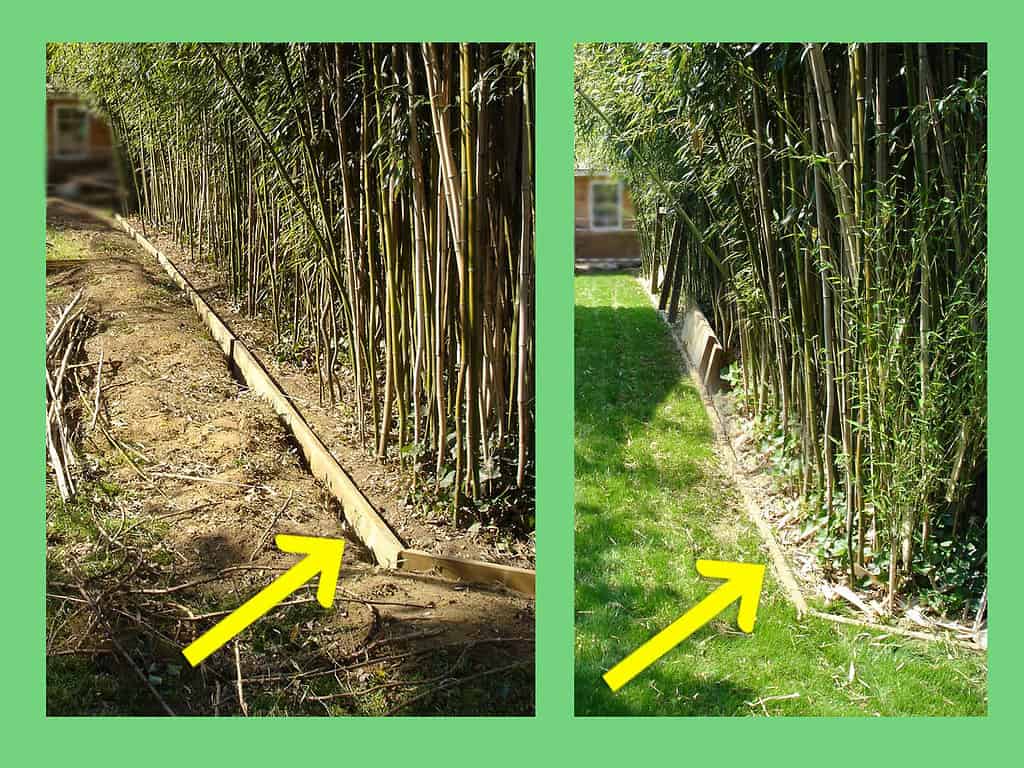Bamboo is a fascinating plant. It is used to make furniture, fencing, scaffolding, baskets, and on and on. It is also a food source, and not just for giant panda bears. Bamboo is used in stir-fries, soups, dumplings, and many other Asian-inspired recipes. Beyond all this, bamboo is growing in popularity as an ornamental plant. However, many bamboos are native to subtropical and tropical regions. Can growers in a colder climate like Connecticut really grow bamboo successfully? Yes, but there are a limited number of bamboo varieties that can stand up to the cold Connecticut winters.

bamboos are one of the few clumping bamboo options for growers in cold-weather climates such as Connecticut.
©Manfred Ruckszio/Shutterstock.com
What Is Your Zone?
Knowing your USDA plant hardiness zone is make-or-break when choosing the right bamboo species for your landscape. If you plant a bamboo species that is not compatible with your zone, you are in for frustration and ultimate failure.
Connecticut’s hardiness zones fall between Zone 5b in the northwest corner and Zone 7b along the coast of Long Island Sound. Most Nutmeggers live in Zones 6a and 6b. This is critically important information when choosing the right bamboo.
Bamboo Species
There are well over 1,400 bamboo species. That is enough to make any gardener feel overwhelmed when trying to choose the right plants for their situation. It is much simpler than it may seem at first, though. All 1,400+ bamboo species are separated into just two categories. Knowing the difference between the two is vital for bamboo growers.
Running Bamboo
The running bamboo category (or “runners” for short) includes about two-thirds of all bamboo species. Running bamboo is the fastest-growing plant on Earth. Some running bamboos can spread 15 feet or more per year. The rhizomes (horizontal root systems) spread with amazing speed and are relentless in their push into new territory. Running bamboos are notorious for growing outside of their intended boundaries.
The extreme spread of running bamboo has led some states and localities to declare certain species invasive. Connecticut passed a law in 2013 that doesn’t declare runners invasive, but it does prohibit growing Phyllostachys bamboos within forty feet of an abutting property or public right of way. These widely available running bamboos include the popular golden bamboo (Phyllostachys aurea).

Golden bamboo is one of the most popular bamboos in the world, but it is also considered invasive in many cities and states.
©iStock.com/Wirestock
Golden bamboo (sometimes referred to as walking stick or fishpole bamboo) is endemic to southeast China and is one of the most widely accessible bamboos in the world today. However, because of its hyper-aggressive growth, this specific bamboo variety has been deemed invasive by multiple states including Maryland, Pennsylvania, Virginia, West Virginia, and Georgia. And the problem isn’t limited to the United States. This bamboo is also a major invasive species in Australia.
All running bamboos grow quickly and can overwhelm well-intentioned growers. If runners encroach on neighboring property or a public thoroughfare, it will be difficult and expensive to fix, aside from the potential legal fines. The bamboo’s rhizomes must be completely dug up, which is a laborious task, or chemicals must be used to kill the bamboo. This is also difficult, potentially dangerous, and bad for the environment.
Clumping Bamboo
There is another option that is far less problematic, though. Clumping bamboos (clumpers) are much slower growing and are non-invasive. The root systems of clumpers only expand a few inches per year. Given time, clumping bamboos can begin to grow out of bounds, but it happens so slowly that it can be caught and corrected before it causes problems.
There is a catch to all of this for Connecticut landscapers, though. Only a handful of clumping bamboos can handle Connecticut’s cold climate. Meanwhile, there is a whole host of cold-hardy running bamboos. That doesn’t mean there are no clumping options for Connecticut growers, though. A few clumpers can thrive in The Constitution State. These bamboos are all Fargesia varieties, one of the hardiest bamboos available today.
Here are some of the best options for clumping bamboo that will thrive in Connecticut while also will keeping you in good standing with both your neighbors and local law enforcement.
Fargesia Denudata
This clumping bamboo is cold-hardy to Zone 5, which means it can be grown throughout Connecticut. Even growers in Litchfield County, the coldest zone in the state, can enjoy this bamboo species.
This is one of the taller Fargesia bamboos. It can reach heights of around 20 feet, meaning it can be grown as a natural privacy screen as well as a landscape ornamental.
The leaves of the Fargesia denudata resist yellowing. If you’re looking for a bamboo that will stay green all year including the winter, this is the one for you.

This young
Fargesia denudatabamboo is hardy to Zone 5 and will grow upwards of 20 feet tall at maturity.
Fargesia Rufa
This is another clumping bamboo that can be grown throughout Connecticut. It is also hardy to Zone 5.
This clumper is smaller than Fargesia denudata. It grows about six to ten feet tall at maturity. It provides wonderful colors as it grows. New culms are a blue/green color with red sheaths, which is reflected in the bamboo’s name (rufa is Latin for “red”). When the culms mature, they change over to a bright green. The culms of the Fargesia rufa measure about ½ inch in diameter.

is a shorter bamboo that tops out at ten feet tall, but it is also hardy to Zone 5.
©silentstock639/Shutterstock.com
Fargesia Scabrida
Growers in Litchfield County need to pass on this bamboo, but it should grow well in most of the remainder of the state. Fargesia scabrida is hardy to Zone 6a.
This is another colorful bamboo that displays different looks throughout the growing season. New culms first appear as bluish-purple and then transition to more of an olive-green as they mature.
This is one of the faster-growing clumping bamboos, but it will only reach heights of 12-14 feet at maturity. It’s a beautiful ornamental, but maybe not quite tall enough for a privacy screen.

©Maurice Lesca/Shutterstock.com
River Cane (Arundinaria gigantea)
If you want to grow a running bamboo that is not mentioned in the 2013 Connecticut law, consider River Cane bamboo. The Arundinaria is the only bamboo genus native to North America.
River Cane (sometimes known as Canebreak) bamboo grows from 20-25 feet, which is high enough to provide a two-story house with a privacy screen. This bamboo is hardy to Zone 5, so it can grow throughout Connecticut. The leaves may die off in a cold winter, but new foliage will grow in the spring.

River Cane bamboo is native to North America, but it is still a running bamboo. Grow with caution and care!
©Dusan UHRIN/Shutterstock.com
Even though this species isn’t mentioned specifically in Connecticut law, it is still a running bamboo. If you are not adequately prepared, you can still wind up with an expensive and difficult problem should this bamboo grow beyond its boundaries.
The best way to combat this is with a growth barrier. A barrier like this is essential if you are growing any running bamboo. You can make one yourself from pressure-treated wood. You can also buy commercial barriers specifically manufactured for hemming in running bamboo.
Just remember that running bamboos are relentless. They must be closely monitored even with a rhizome barrier in place.
If you want to avoid this hassle while still enjoying bamboo in your landscape, the clumpers listed above are great options. There is no reason why Nutmeggers can’t enjoy growing bamboo. They just need to choose the varieties that can tolerate a Connecticut winter.
Thank you for reading! Have some feedback for us? Contact the AZ Animals editorial team.









